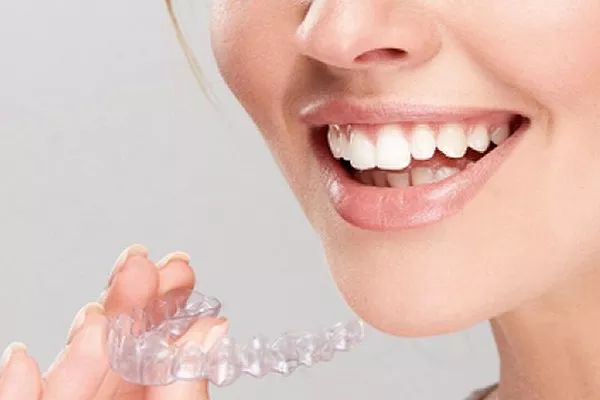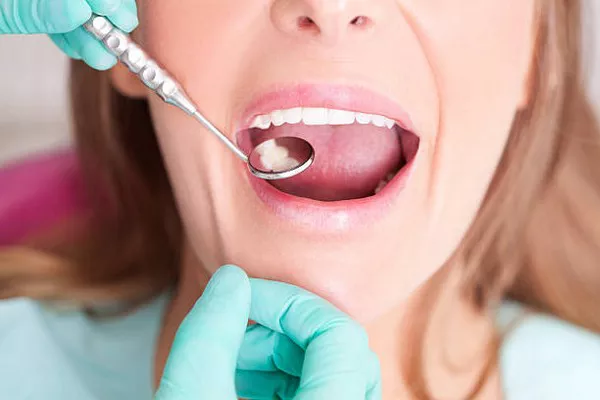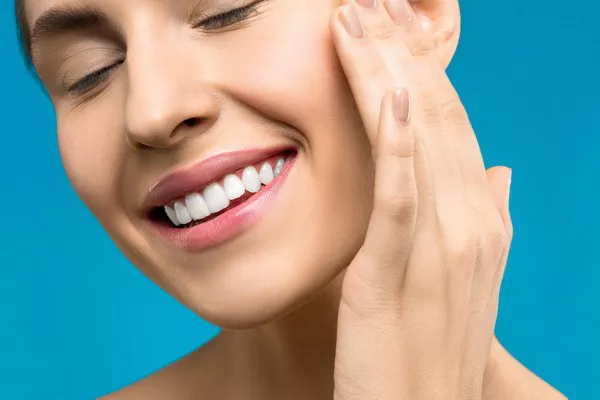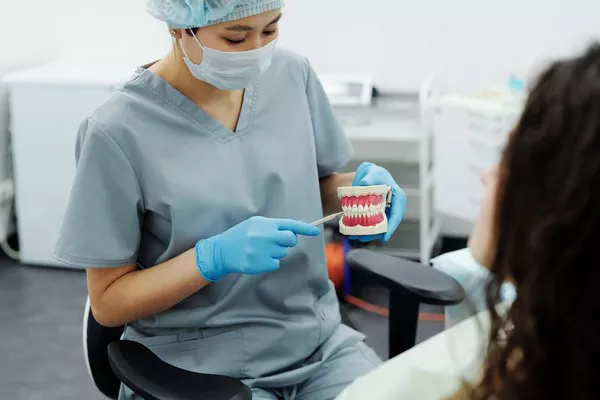Teeth whitening has become increasingly popular in recent years as people seek brighter, more vibrant smiles. This cosmetic dental procedure involves lightening the color of teeth by removing stains or altering the intrinsic color. Whether it’s from coffee, tea, red wine, or simply aging, teeth can become discolored over time. Understanding the process of teeth whitening is crucial for anyone considering this treatment.
Teeth whitening works by using a whitening agent, usually containing hydrogen peroxide, to break down stains on the teeth. This agent penetrates the enamel and dentin, reaching the discolored molecules. Once the whitening agent is applied to the teeth, it needs to be activated to kickstart the whitening process. This is where light comes into play.
Role of Light in Teeth Whitening
Light, particularly LED light, is commonly used in teeth whitening procedures to activate the whitening agent. When the whitening gel is exposed to light, it helps to accelerate the chemical reaction, allowing the hydrogen peroxide to penetrate the teeth more effectively and break down stains. This results in a faster and more efficient whitening process.
LED lights emit a specific wavelength of blue light that is optimal for activating the whitening agent. Unlike UV lights, which were previously used in teeth whitening but have fallen out of favor due to safety concerns, LED lights are considered safer and more effective. They do not produce harmful UV radiation and are less likely to cause damage to the gums and surrounding tissues.
Types of Light Used
There are several types of light used in teeth whitening procedures, including LED, UV, and halogen lights. Each type of light has its own characteristics and effectiveness in activating the whitening agent.
UV lights were once popular in teeth whitening procedures because of their ability to accelerate the whitening process. However, concerns about their safety, particularly the risk of skin damage and increased sensitivity, have led to a shift towards safer alternatives like LED lights.
Halogen lights, while still used in some dental offices, are less commonly used compared to LED lights. They emit a broad spectrum of light, including UV radiation, which can pose risks to both patients and dental professionals.
LED lights have become the preferred choice for teeth whitening procedures due to their safety and effectiveness. They emit a specific wavelength of blue light that activates the whitening agent without producing harmful UV radiation. LED lights are also more energy-efficient and durable compared to other types of lights, making them a cost-effective option for dental practices.
Effectiveness of Light-Assisted Whitening
The effectiveness of light-assisted teeth whitening has been a topic of debate among dental professionals and researchers. While some studies have shown that the use of light can enhance the whitening process and produce more significant results, others have questioned its benefits.
Proponents of light-assisted whitening argue that the use of light accelerates the chemical reaction of the whitening agent, resulting in faster and more effective whitening. They believe that the combination of light and whitening gel produces superior results compared to whitening gel alone.
However, critics of light-assisted whitening point to studies that have found little to no difference in whitening outcomes between treatments with and without light. They argue that factors such as the concentration of the whitening agent and the duration of treatment play a more significant role in determining the effectiveness of teeth whitening.
Ultimately, the effectiveness of light-assisted whitening may vary depending on individual factors such as the severity of discoloration, the quality of the whitening agent, and the skill of the dental professional performing the procedure.
Safety and Side Effects
Safety is a crucial consideration in any teeth whitening procedure, particularly when it comes to the use of light. While LED lights are generally considered safe, there are potential side effects and risks associated with teeth whitening treatments.
One common side effect of teeth whitening is tooth sensitivity, which occurs when the whitening agent penetrates the enamel and irritates the nerves inside the teeth. This can cause temporary discomfort or pain, particularly when consuming hot or cold foods and beverages. However, tooth sensitivity typically resolves on its own within a few days to a week after treatment.
Another potential side effect of teeth whitening is gum irritation, which can occur when the whitening gel comes into contact with the gums during the treatment process. This may cause redness, swelling, or soreness in the gums, but these symptoms are usually mild and temporary.
In rare cases, overuse or misuse of teeth whitening products can lead to more serious side effects such as chemical burns or permanent damage to the enamel. It’s essential to follow the instructions provided by your dentist or the manufacturer of the whitening products and to avoid overusing whitening treatments.
To mitigate the risk of side effects, dental professionals may use protective measures such as applying a barrier gel to the gums or using custom-fitted trays to prevent the whitening gel from coming into contact with the gums.
Professional vs. At-Home Treatments
Teeth whitening treatments can be performed professionally at a dentist’s office or at home using over-the-counter whitening kits. Both options have their own advantages and disadvantages in terms of results, safety, and convenience.
Professional teeth whitening treatments typically yield faster and more dramatic results compared to at-home kits. Dentists have access to higher concentrations of whitening agents and advanced equipment such as LED lights, allowing them to achieve better whitening outcomes in a shorter amount of time.
In addition, professional teeth whitening treatments are supervised by trained dental professionals who can monitor the progress of the treatment and address any concerns or complications that may arise. This can provide patients with peace of mind knowing that their treatment is being conducted safely and effectively.
However, professional teeth whitening treatments can be more expensive than at-home kits, making them less accessible to some individuals. In addition, scheduling appointments at the dentist’s office may be less convenient for those with busy lifestyles.
At-home whitening kits offer a more affordable and convenient alternative to professional treatments. These kits typically contain lower concentrations of whitening agents and may not produce results as quickly or as effectively as professional treatments. However, they can still help to brighten the teeth and improve overall appearance.
When choosing an at-home whitening kit, it’s essential to look for products that have been approved by dental professionals and to follow the instructions carefully to avoid misuse or overuse. It’s also a good idea to consult with your dentist before starting any whitening treatment to ensure that it is safe and appropriate for your dental health needs.
Maintenance and Longevity of Results
The longevity of teeth whitening results depends on various factors, including the individual’s oral hygiene habits, diet, and lifestyle choices. With proper care and maintenance, the results of teeth whitening treatments can last anywhere from several months to a few years.
To maintain a brighter smile after whitening treatment, it’s essential to practice good oral hygiene habits such as brushing your teeth twice a day, flossing daily, and rinsing with a fluoride mouthwash. Avoiding foods and beverages that are known to cause staining, such as coffee, tea, and red wine, can also help to prolong the results of teeth whitening.
In addition, scheduling regular dental check-ups and cleanings can help to keep your teeth healthy and prevent new stains from forming. Your dentist may also recommend touch-up treatments or at-home maintenance products to help maintain the brightness of your smile between professional whitening sessions.
Conclusion
teeth whitening can be an effective way to achieve a brighter, more confident smile. By understanding the role of light in the whitening process, as well as the various types of light used and their effectiveness and safety, individuals can make informed decisions about their teeth whitening options. Whether opting for professional treatments or at-home kits, maintaining good oral hygiene habits and following your dentist’s recommendations can help to ensure long-lasting results and a healthier smile.
FAQs About Teeth Whitening with Light
1. Does teeth whitening with light work?
Yes, teeth whitening with light can be effective in enhancing the whitening process. Light, particularly LED light, is commonly used to activate the whitening agent applied to the teeth, such as hydrogen peroxide. The light helps to accelerate the chemical reaction of the whitening agent, allowing it to penetrate the teeth more effectively and break down stains. However, the effectiveness of light-assisted whitening may vary depending on individual factors such as the severity of discoloration and the quality of the whitening products used.
2. Do UV lights really help whiten teeth?
UV lights were once popular in teeth whitening procedures for their ability to accelerate the whitening process. However, concerns about their safety, particularly the risk of skin damage and increased sensitivity, have led to a shift towards safer alternatives like LED lights. While UV lights may still be used in some dental offices, LED lights are generally considered safer and more effective for teeth whitening.
3. What does the light do for your teeth?
The light, typically LED light, used in teeth whitening procedures serves to activate the whitening agent applied to the teeth. When the whitening gel is exposed to the light, it helps to accelerate the chemical reaction of the whitening agent, allowing it to penetrate the enamel and dentin more effectively. This helps to break down stains and lighten the color of the teeth, resulting in a brighter and more vibrant smile.
4. How long does it take to whiten your teeth with UV light?
The duration of teeth whitening treatments with UV light can vary depending on factors such as the concentration of the whitening agent used and the severity of discoloration. In general, professional teeth whitening treatments with UV light may take anywhere from 30 minutes to an hour per session. However, multiple sessions may be required to achieve the desired level of whitening. It’s essential to consult with your dentist to determine the most appropriate treatment plan for your individual needs and goals.
You Might Be Interested In






























